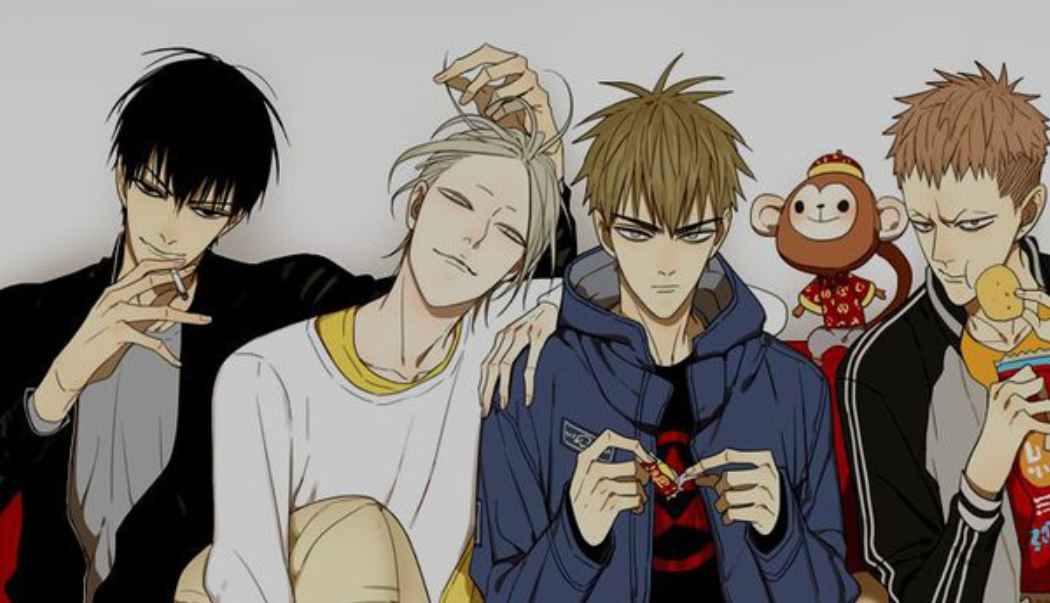Yaoi manga, additionally referred to as Boys’ Love or BL, is a genre of Japanese manga that makes a speciality of male homosexual relationships. It is awesome from Bara, which targets a gay audience. Originating within the 1970s, yaoi stories are usually written by using ladies for women and girls, exploring issues of love, sexuality, and severe feelings like loneliness. The term yaoi is an acronym for yama nashi, ochi nashi, and imi nashi, which means no climax, no factor, and no which means, regarding tale systems as opposed to sexual content material. Yaoi capabilities two primary individual roles: seme (top/attacker) and uke (backside/receiver), derived from martial arts phrases.
Characters in Yaoi often are not perceived as homosexual but are portrayed as neutrally in love with particular characters. This style allows readers to explore numerous sexual identities free from stereotypes and societal norms, with characters often designed to be androgynous. Yaoi has gained popularity through the years, with its first official translation within the US in 2003, attractive to an extensive audience of American ladies and ladies.
What is yaoi manga?
Yaoi manga is a genre of Japanese manga, anime, and different sorts of media that specializes in romantic or sexual relationships between male characters. It is a style frequently created by using and for women, exploring issues of love and intimacy among male characters. The period yaoi is derived from the Japanese words Yama nashi, Ochi nashi, and Imi nashi, which translates to No top (climax), no fall (resolution), and no meaning, indicating that memories in this style may additionally prioritize emotion and individual development over conventional plot structures. Yaoi is likewise known as Boys’ Love or BL, it has gained a reputation for its attractive narratives that revolve around relationships between male characters. For more information on this journey visit LifeMaintain.
What is the distinction among yaoi manga and yaoi anime?
The significant qualification between Yaoi manga and Yaoi anime lies in their organization. Yaoi manga refers back to the genre of Japanese comics that focuses on romantic or sexual relationships among male characters, regularly created through and for girls. On the other hand, yaoi anime refers to lively series or films that depict similar topics of male-male relationships. While each manga and anime can explore identical narratives and characters, the distinction lies inside the medium through which the tales are provided – manga being in comic shape and anime being in animated form.
What is the meaning of yaoi manga?
The meaning of yaoi manga alludes to a style of Japanese manga that spends significant time in heartfelt or sexual connections among male characters, frequently made with the guide of and for young ladies. The period yaoi is derived from the Japanese words Yama nashi, Ochi nashi, and Imi nashi, which are interpreted as No height (climax), no fall (decision), no that means, indicating that tales in this genre may also prioritize emotion and character development over conventional plot systems. Yaoi manga regularly explores themes of affection, preference, and emotional connections inside equal-intercourse relationships, concentrated on a lady audience and providing idealized homosexual male relationships. It generally includes two most important man or woman roles: seme (pinnacle/attacker) and uke (bottom/receiver), with characters regularly designed to be androgynous. Yaoi manga has gained a reputation worldwide, providing readers with enticing narratives approximately male-male relationships.
What’s the foundation of the term yaoi?
The term yaoi originates from Japan and is rooted in fan culture and manga. It is stated to be a Japanese acronym shaped from the words yama nashi, ochi nashi, and imi nashi, which translates into English as no climax, no decision, no which means. This period was to start with utilized in a self-deprecating way within the context of dōjinshi (self-published works) subculture to refer to amateur fan works that focused on sex rather than plot, often parodying mainstream manga and anime by depicting male characters from popular collections of sexual situations.
Over time, yaoi developed to grow to be a style of fictional media that features homoerotic relationships among male characters, normally created via women for girls. While the period yaoi is typically used within the West as an umbrella period for Japanese-prompted media with male-male relationships, in Japan and plenty of Asia, boys’ love (BL) is the established period for this sort of media.
What are some manga sturdy woman characters
Some Yaoi manga titles that function robust girl characters consist of:
- Given
- Finder
- Junjou Romantica
- Sekaiichi Hatsukoi
- Snow Fairy
- This
- Rutta to Kodama
- Konya mo Nemurenai
- Itoshi no Nekokke
- Kami-sama no Ekohiiki
These manga titles exhibit sturdy girl characters in the Yaoi genre, adding depth and diversity to the stories.
Story of yaoi manga
aoi manga, additionally called Boys’ Love or BL, has a rich history that dates back to the Seventies. Originating as a subgenre of shōjo manga, which targets a female target audience. Yaoi makes a speciality of male homosexual relationships but isn’t always aimed toward a homosexual target audience like bara other style. The style explores topics of affection, desire, and extreme feelings inclusive of loneliness. Yaoi tales are usually written via girls for girls and women and are regularly characterised by two essential character roles: seme (pinnacle/attacker) and uke (backside/receiver). These roles are derived from martial arts phrases and do now not necessarily mean a specific sexual orientation for the characters.
Interestingly, yaoi characters often are no longer perceived as homosexual but are portrayed as being in love with specific characters. This genre allows readers to discover numerous sexual identities loose from stereotypes and societal norms. Yaoi manga received recognition over the years and has become greater broadly universal. With its first authentic translation in the US taking place in 2003, attractive to American ladies and women.
What is the appeal of yaoi manga to readers?
The attraction of Yaoi manga to readers lies in its potential to provide a secure and resourceful area for exploring subject matters of love, desire, and intimacy. This style gives also a unique and frequently taboo exploration of romantic and sexual relationships between male characters. Growing engaging narratives that captivate readers. Yaoi manga permits individuals to delve into emotional connections and complex relationships inside equal-intercourse contexts. Providing a wide variety of memories that cater to a huge audience, mainly girls and girls. The genre focuses on the man or woman’s improvement, emotions, and relationships. Instead of conventional plot structures contributes to its enchantment. Drawing readers into charming and regularly idealized portrayals of gay male relationships.
What are some commonplace criticisms of manga
Some commonplace criticisms of yaoi manga include:
Sustaining perilous generalizations: Yaoi manga has been scrutinized for also propagating hazardous generalizations about gay folks. Much of the time depicting them in unreasonable and one-layered techniques can build up bad discernment.
Ridiculous portrayals of connections: Pundits contend that Yaoi consistently offers unreasonable and precarious depictions of connections. Chiefly in expressions of assent. Stories might highlight seasons of rape or non-consensual way of behaving that are not tended to precisely.
The fetishization of gay men: There are stresses that Yaoi manga can fetishize gay men. Generalizing them and diminishing their characters to shallow attributes like real looks or heartfelt sayings.
Absence of skill in LGBTQ connections: A few pundits bring up the makers of Yaoi manga. Who are many times straight ladies, can likewise come up short on a profound comprehension of LGBTQ connections and sexuality. Prompting misinformed or destructive portrayals in their works.
Accentuation on seme/uke elements: The weighty accentuation on the seme/uke dynamic in Yaoi manga has been reprimanded for sustaining generalizations and banishing the intricacy of characters. Habitually consigning them to something like one-layered jobs in dating.
These criticisms spotlight a number of the worries raised about Yaoi manga and its also impact on the portrayal of gay relationships and characters.
How has the complaint of manga changed over time
The complaint of Yaoi manga has evolved, reflecting changing societal attitudes and views. Initially, yaoi manga confronted controversy when it first appeared inside. The male-dominated manga enterprise because of its subject matters and the fact that girls were the authors. Which challenged conventional norms. Critics raised concerns approximately the portrayal of male-gay relationships and the impact of Yaoi on the industry. However, as Yaoi gained recognition and became greater mainstream, criticism shifted closer to more nuanced factors of the genre.
Over time, criticism of yaoi manga has focused on several key regions, inclusive of:
- Sustaining destructive generalizations: Pundits have featured how Yaoi manga can also propagate unsafe generalizations about gay folks. Depicting them in ridiculous and one-layered approaches.
- Unreasonable portrayals of connections: Concerns were raised around the ridiculous and precarious depictions of connections in Yaoi manga. Explicitly regarding assent and sexual elements.
- The fetishization of homosexual guys: Some critics have talked about how Yaoi manga can also fetishize homosexual men. Decreasing their identities to superficial traits and romantic tropes.
- Lack of information on LGBTQ relationships: Criticism has been directed closer to the creators of Yaoi mangas, frequently instantly girls. For potentially lacking also deep understanding of LGBTQ relationships and sexuality. Leading to misguided or harmful representations.
Overall, the criticism of Yaoi manga has grown to be extra nuanced and focused on particular elements. The genre because it has won recognition and recognition in the manga enterprise and amongst readers.
Facts About yaoi manga
Some records approximately Yaoi manga consist of:
- Yaoi manga, moreover called Young Men’s Adoration or BL. A style of Japanese manga that makes a speciality of heartfelt or sexual connections between male characters.
- The term yaoi is derived from the Japanese expression yama nashi, ochi nashi, and imi nashi. Which means no peak, no element, no significance, connecting with story frameworks instead of sexual substance material.
- Yaoi mangas originated in the Seventies as a subgenre of shōjo manga. Concentrated on a woman audience and also exploring subject matters of affection, desire, and excessive feelings like loneliness.
- Yaoi memories are usually written by ladies for girls and girls, supplying a unique attitude on male-gay relationships.
- The style functions primary individual roles: seme (pinnacle/attacker) and uke (bottom/receiver). Derived from martial arts terms however not always indicating a specific sexual orientation for the characters.
- Characters in Yaoi mangas frequently are not perceived as gay but are portrayed as being neutrally in love with specific characters.
- Yaoi manga permits readers to discover numerous sexual identities loose from stereotypes and societal norms. With characters frequently designed to be androgynous.
- While Yaoi mangas can characteristic express content, no longer all Yaoi tales attention on sexual scenes. There are variations in the genre that cater to distinct alternatives.
- Yaoi has evolved from a spot subgenre to a more mainstream style. Gaining also reputation worldwide and attractive to a large target market beyond Japan.
The first authentic translation of Boys’ Love manga appeared in the US in 2003. Marking the start of Yaoi’s growth in also reputation amongst American girls and women.
Conclusion
In the end, yaoi manga has hooked up itself as a large style in the realm of Japanese manga. Offering readers a unique exploration of romantic and sexual relationships between male characters. Originating in the Nineteen Seventies, yaoi has also developed from a niche subgenre to a mainstream genre. Fascinating audiences with its consciousness of love, preference, and emotional connections. Despite facing criticism for perpetuating stereotypes and unrealistic portrayals. Yaoi manga keeps attracting a large readership, presenting a safe and innovative area for exploring issues of intimacy and sexuality. As the genre grows in recognition internationally. It stays a dynamic and evolving shape of storytelling that challenges traditional norms and gives a sparkling attitude to relationships and identification.

